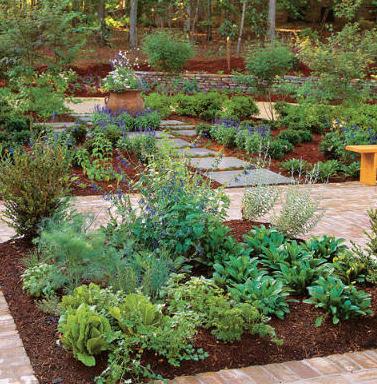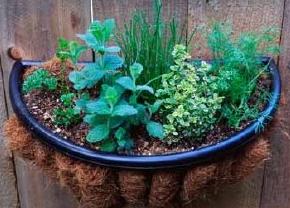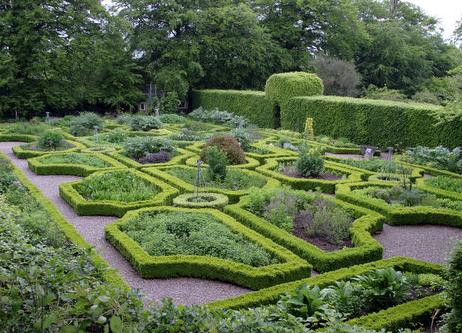Categories
Calendars
Guides
Reviews
Archive
Gallery
Articles
Ask Our Gardening Expert
Creating a Herb Garden
They are a range of easily grown annuals, biennials and perennials, shrubs, trees and flowers with various growth habits that are not only grown for ornamentation but also of some practical use as well. We use herbs for their medicinal, culinary and aromatic qualities. Whilst herbs can be bought ready prepared in shops, they lack the intensity through drying and preparation that we find in the herbs we grow freshly for ourselves. The herb garden was once used as a source of curatives for many ailments but now, the stress has shifted to culinary uses. A large number of herbs are little different from the wild species but many different cultivars are now available that make them valuable as decorative plants.
An informal herb planting
Preparing a Herb Garden
A herb garden can range from three pots on a windowsill to an Elizabethan knot garden. As with other plants, the greatest success is achieved when grown in conditions similar to their natural habitat. Many herbs are Mediterranean in origin, preferring sunshine and free-draining soil, while others tolerate partial shade provided that they are not waterlogged. As a general rule, any sunny site with free-draining well cultivated soil will do and plants will thrive with a generous mulch of organic matter and feeding from time to time.
Use containers or planters if space is at a premium
If there is space available, a separate herb garden with many herbs grown close together creates an impressive impact. A special feature can be constructed to show interesting patterns of texture and colour which also makes harvesting easier. If there is no space, herbs can be grown as plants on their own, filling the gaps with the usual annual bedding plants or in rows in the vegetable garden. They can be planted along footpaths or steps to be brushed against when people pass or in gaps in driveways and between paving stones.
Designing a herb garden
As with all gardens, the herb garden should be designed with the needs of its owner and the style of the rest of the garden in mind. An informal garden effectively combines the colours and habits of the plants. Formal gardens are usually based on geometric patterns using low hedges and paths, each bed created by the pattern is planted with one type of herb to form blocks of colour and texture. The design can be in the form of a wheel with different herbs planted in each segment or a square partitioned into a variety of shapes. We can then adjust the growing conditions of each sector to suit a particular plant. Formal designs are interesting when viewed from above and can be sited so it can be seen from an upstairs window.
Elaborate designs are best appreciated from a higher level
Draw up a plan of the site with measurements, noting changes in level and where shadows fall throughout the day and the seasons. Remember that herbs should be within easy reach for harvesting without the need to step on soil. Squared paper is useful for keeping to scale. Draw on overlays of tracing paper until a finished design is reached. For all design work, use a board, some masking tape to secure the paper and some simple drawing instruments like rulers, compass and pencils. Good planning on paper saves mistakes made later on. Decide upon which herbs you need to grow, consider their needs, habit, amounts required for use and mark them on the plan. If containers are used, use them as a focal point or group them in a complementary arrangement.
Herbs make an invaluable contribution to every garden. There is much discussion as what is a herb and what is not. 

Many herbs grow well in containers, which can be cans, kitchenware, hanging baskets, pots and tubs. The possibilities are only limited by the plants’ requirements.